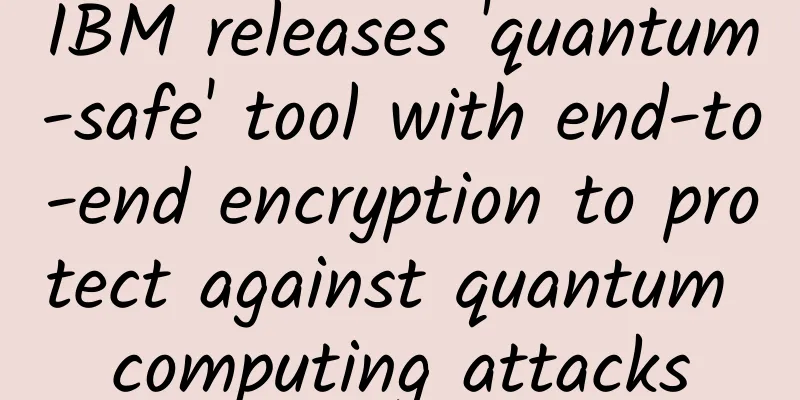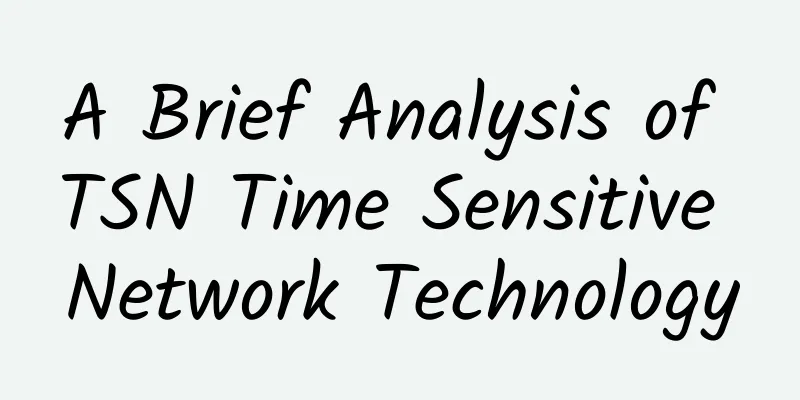A complete guide to the development of TCP/IP

|
In the late 1950s, during the Cold War between the United States and the Soviet Union, in order to avoid having its own computers blown up and causing the entire network to be paralyzed, the U.S. Department of Defense's Advanced Research Projects Agency built a military network to ensure that even if some computers were attacked and destroyed, other parts could still communicate and contact normally. This military network is the famous "ARPANET." Initially, the ARPANET connected only four computers, but by the 1970s, the number of connected computers had reached dozens. At that time, the ARPANET had many limitations, such as the inability of different computer networks to communicate with each other. In order to solve this problem, APPA launched a new research project to try to interconnect different computer LANs. The "Internet" was born. In the early days, ARPANET used a network protocol called NCP, but with the development of the network and the increasing demand of users for the network, this protocol could no longer fully support ARPANET. The NCP protocol has a major flaw: it can only be used in a homogeneous environment. What is a homogeneous environment? This means that users using the Windows operating system cannot communicate with users of the MacOS operating system, nor can they communicate with users of Android. This will undoubtedly greatly restrict the development of the Internet and the user experience will be extremely bad. At that time, there were many types of computers, and different types of computers used different languages. They could not communicate with each other, and the transmission of information was very inconvenient. The designers of the ARPANET at the time urgently needed a new protocol to change this situation. This important task fell on Robert Kahn, who was then working at the Defense Advanced Research Projects Agency of the United States Department of Defense and served as director of the Information Processing Technologies Office, and his partner Winter Cerf.
Robert Kahn and Vint Cerf were later called the fathers of the Internet and are the two most famous scientists in the history of the development of the modern global Internet. They racked their brains to develop and design new protocols. Hard work pays off. In 1974, Kahn and Cerf published a paper titled "Network Communication Protocol for Packet Switching" in the IEEE journal with their research results, formally proposing TCP/IP to achieve interconnection between computer networks. In order to verify the availability of the TCP/IP protocol, Kahn and Cerf conducted an experiment in which a data packet was sent from one end and reached the server after a journey of 100,000 kilometers. During this transmission process, the data packet did not lose a single byte! However, like most new technologies or standards, TCP/IP was strongly resisted by many people when it was first released. In particular, the standardization organization ISO introduced the famous ISO seven-layer model, and the relatively simple TCP/IP was strongly despised. But Kahn and Cerf did not give up. After four years of continuous improvements, the TCP/IP protocol finally completed the construction of the infrastructure. The IP protocol assigns an address to each connected device, while TCP is responsible for detecting transmission problems. The development of TCP/IP has always been full of obstacles, and Kahn and Cerf have been engaged in a long struggle. Finally, in 1983, the Defense Advanced Research Projects Agency of the United States Department of Defense decided to phase out the NCP protocol and replace it with TCP/IP. Nearly 10 years passed from the publication of the paper to its formal adoption. Kahn and Cerf did not keep TCP/IP for themselves, but generously made it available for free to all computer manufacturers, which led to the Internet of today.
By the 1990s, the TCP/IP protocol had been widely promoted and became the cornerstone of the entire Internet. In 2004, the Turing Award, which is equivalent to the Nobel Prize in computer science, was awarded to Robert Kahn in recognition of his outstanding contributions to the Internet. |
<<: Does Snowflake's popularity mean Hadoop is dead? What exactly is a big data system?
>>: Application of 5G technology in smart agriculture
Recommend
100 days after 5G license issuance, Inspur Cloud promotes "High-tech Video" from concept to implementation
Recently, the new concept of "high-tech vide...
China Unicom successfully returns to the forefront of 5G user development
[[389476]] After much anticipation, China Unicom ...
SmartHost: AMD Ryzen series 35% off, starting at $2.57/month, Los Angeles/New Jersey/Las Vegas data centers
SmartHost has posted a message on its website say...
Dr. Li Jin: Is building credibility “regardless of cost”?
[51CTO.com original article] June in Beijing is w...
The next step for the intelligent interconnection of all things: real-time interaction may become the water and air of the metaverse
On October 22-23, the RTE2021 Real-time Internet ...
Network monitoring tool! Don't miss these 7 free open source tools
Editor's note: In the real estate market, the...
Monitor infrastructure to prevent unexpected downtime
[[258649]] 【51CTO.com Quick Translation】Infrastru...
Practice: How to connect two routers through WAN and LAN ports respectively?
The IP addresses of two routers in a network segm...
Donghua IDC comprehensive operation management system
IDC——Innate Investment Gene As social division of...
Will edge computing replace cloud computing? Has the strongest dark horse in the 5G era emerged?
Computers are hundreds of miles apart, but the la...
A brief talk about link aggregation, have you learned it?
Speaking of airport expressways, people often use...
LOCVPS Hong Kong VPS is 30% off and starts from 25.9 yuan/month, with BGP optimized lines in Hong Kong Tsuen Wan/Tai Po/Yundi/MG and other data centers
LOCVPS has released a 30% discount code for all V...
The development of 5G should obviously not come at the expense of limiting WiFi speed
[[442942]] In today's article, we are not goi...
Record an incident where a network request connection timed out
[[338985]] This article is reprinted from the WeC...
WiFi is disliked by the EU and 5G may be selected as the communication standard for Internet of Vehicles
EU member states recently voted on a plan to adop...









